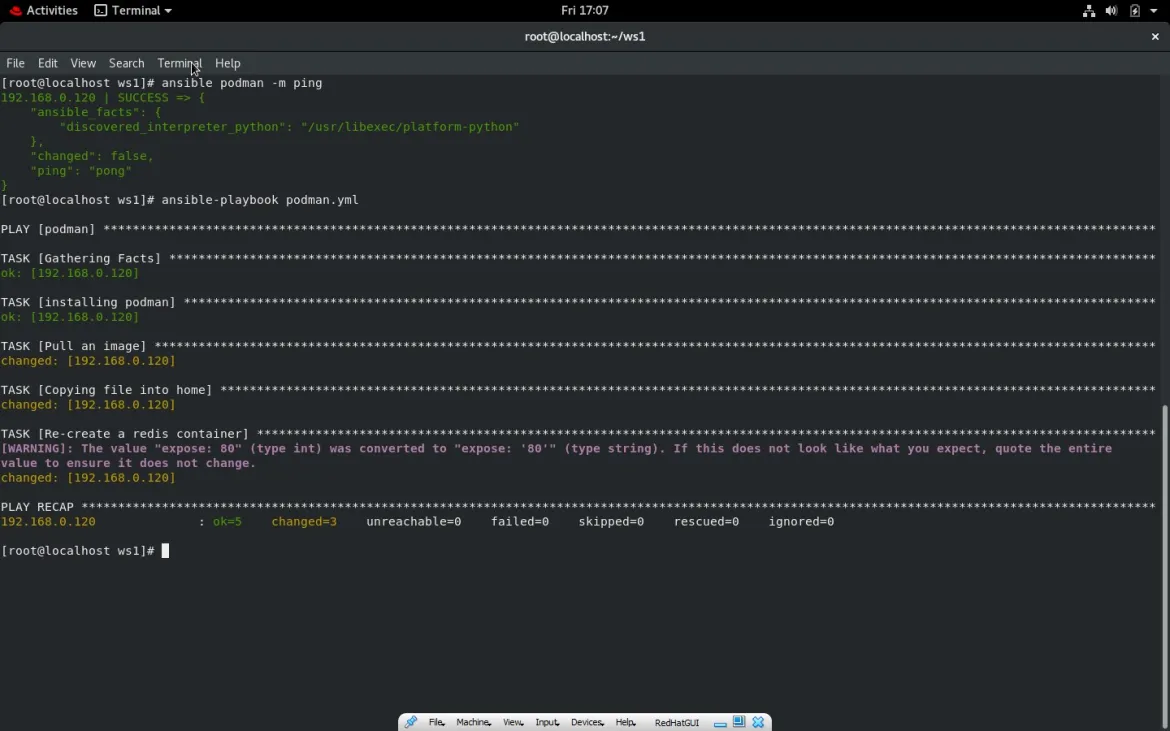Ansible is an open source IT automation engine used to automate application organization, framework computerization, cloud provisioning, and numerous IT administration tasks. Ansible improves the adaptability, consistency, and dependability of the IT climate.
Podman is an open source containerization platform that packages all the dependencies for building, shipping, and running applications as Podman containers. Using container virtualization technology ensures that an application works seamlessly in any environment. Podman CLI can implement almost all the commands from the Docker CLI.
[ Readers also liked: Improved systemd integration with Podman 2.0 ]
In this article, I show you how to automate Podman with Ansible by demonstrating how to automate various operations on the managed node. These are the following operations that you learn how to perform on a managed node:
- Install Podman
- Pull the httpd server image
- Copy the HTML code in the destination directory
- Run the httpd container and expose it to the public
- Start the webserver
For this procedure, I'm using Ansible 2.10.
Playbook for the entire setup
Installing Podman
In the package module, assign the name of the software you need to install. The state tag is used to describe the desired condition of the software, here I use present, which means install.
- name: installing podman
package:
name: "podman"
state: present
Pull the httpd server image from the Podman image repository
Using the Ansible podman image module, pull the httpd image.
- name: Pull an image
containers.podman.podman_image:
name: httpd
Copy webpage
Using the copy module, copy the webpage from source to destination.
- name: Copying file into home
copy:
src: /root/ws1/index.html
dest: /home
Run the httpd container
Run the container in detached mode and attach the volume to it after exposing its port.
- name: Re-create a redis container
containers.podman.podman_container:
name: sarthak
image: httpd
state: started
detach: true
exposed_ports:
- 80
ports:
- 4444:80
volumes: /home/:/usr/local/apache2/htdocs/
Running playbook to run Podman services
Confirm your managed node has Podman installed
Podman is not installed on this system, so install it by using the podman.yml playbook.
podman --version

Next, run the playbook:
ansible-playbook podman.yml

Confirm that Podman successfully installed:
podman --version

Verify the httpd server image was successfully pulled:
podman ps

Check the web server:
curl [ip address]:[port no]

After following all these steps, Podman will be configured in your systems, and the website will be hosted on the 4444 port.
The complete playbook file:
---
- hosts: podman
tasks:
- name: installing podman
package:
name: "podman"
state: present
- name: Pull an image
containers.podman.podman_image:
name: httpd
- name: Copying file into home
copy:
src: /root/ws1/index.html
dest: /home
- name: Re-create a redis container
containers.podman.podman_container:
name: sarthak
image: httpd
state: started
detach: true
exposed_ports:
- 80
ports:
- 4444:80
volumes: /home/:/usr/local/apache2/htdocs/
[ Need more on Ansible? Take a free technical overview course from Red Hat. Ansible Essentials: Simplicity in Automation Technical Overview. ]
Wrap up
Ansible can be used to install Podman and to deploy Podman containers, simplifying your sysadmin life and adding scalability and flexibility to your environment.
Sull'autore
Sarthak Jain is a Pre-Final Year Computer Science undergraduate from the University of Petroleum and Energy Studies (UPES). He is a cloud and DevOps enthusiast, knowing various tools and methodologies of DevOps. Sarthak also Mentored more than 2,000 students Regarding the Latest Tech trends through their community Dot Questionmark.
Ricerca per canale
Automazione
Novità sull'automazione IT di tecnologie, team e ambienti
Intelligenza artificiale
Aggiornamenti sulle piattaforme che consentono alle aziende di eseguire carichi di lavoro IA ovunque
Hybrid cloud open source
Scopri come affrontare il futuro in modo più agile grazie al cloud ibrido
Sicurezza
Le ultime novità sulle nostre soluzioni per ridurre i rischi nelle tecnologie e negli ambienti
Edge computing
Aggiornamenti sulle piattaforme che semplificano l'operatività edge
Infrastruttura
Le ultime novità sulla piattaforma Linux aziendale leader a livello mondiale
Applicazioni
Approfondimenti sulle nostre soluzioni alle sfide applicative più difficili
Virtualizzazione
Il futuro della virtualizzazione negli ambienti aziendali per i carichi di lavoro on premise o nel cloud
